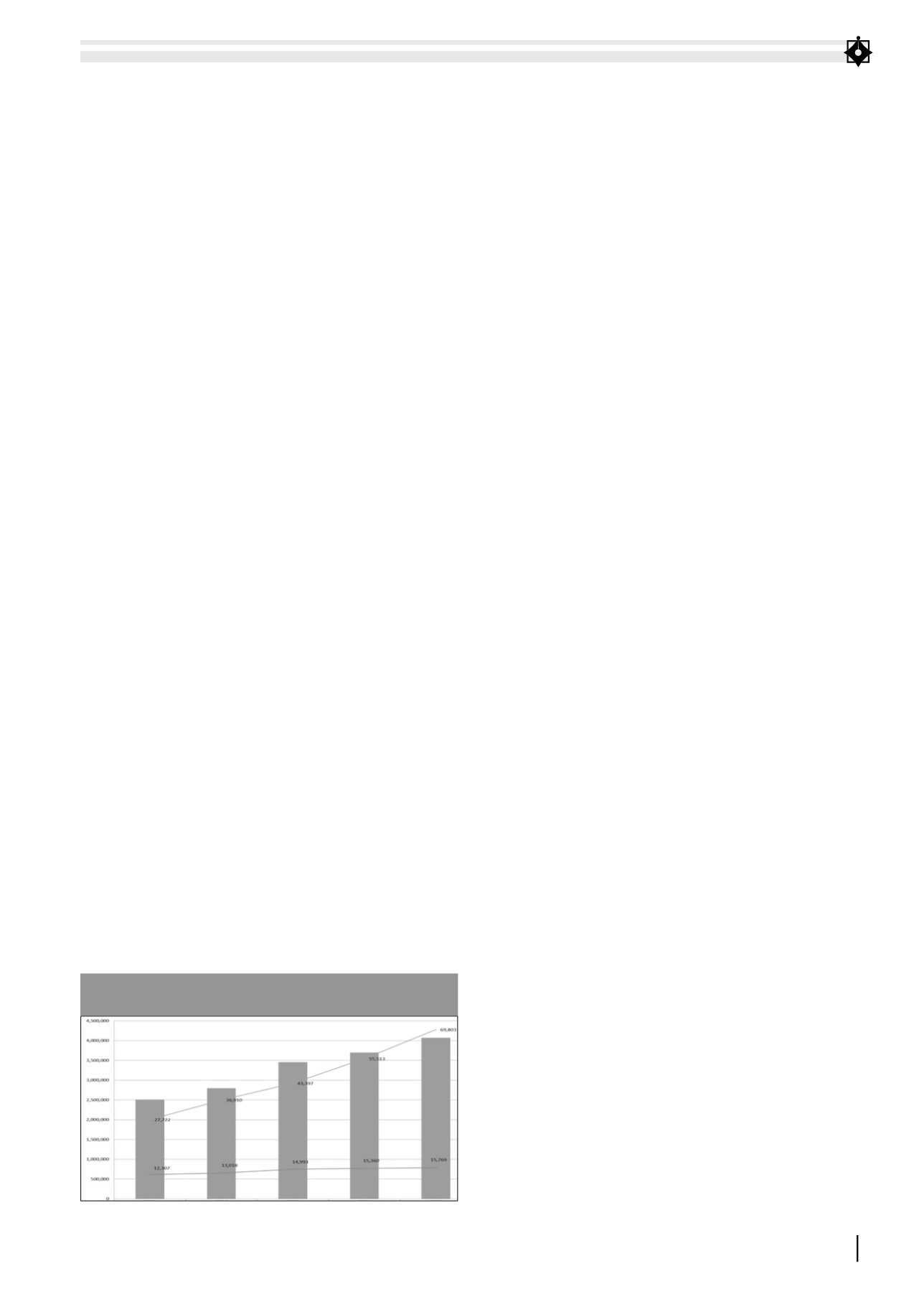
REVIEW
of
FINANCE -
November, 2018
33
social insurance contributions for FDI enterprises
reflects labor productivity, the efficiency of using
funds of the management apparatus and the
implementation results. The effectiveness of state
management over social insurance contributions
for foreign invested enterprises is assessed
in terms of: Achieving the collection of social
insurance with a certain level of cost of resources;
reach a certain target with minimal cost of
resources; Achieving goals in relation to the cost
of resources (finance, human resources ...). In
other words, the efficiency of state management
over social insurance is measured through the
following indicators:
(i) Level of increase of social insurance revenue
(ii) Minimize the collection of social insurance
(iii) Level of cost savings
The immediate objective of State management
onsocial insurance contribution to foreign invested
enterprises is fully collected (the amount must
be paid on the salary, Employees in accordance
with the law), timely collection (ensure the time
to participate in social insurance under the law).
Three long-term goals of state management of
social insurance for foreign invested enterprises is
to expand coverage; Ensure sustainable financing
of social insurance fund and ensure the satisfaction
of participants in social insurance.
Evaluating the efficiency of the state
management over the collection of social
insurance for FDI enterprises
Increasing social insurance revenue of foreign
invested enterprises
The level of increase of social insurance revenue
of foreign invested enterprises is assessed on the
increase of enterprises, number of employees;
and annual revenues.
FDI often have a large capital base, employing
a large number of workers, on average 325
employees per enterprise (MOLISA, 2017).
Employees in the FDI sector increased in both
quantity and density, especially in the period
2012-2015. “If in the period 2007-2011, the
proportion of labor in the enterprise sector is
always about 23%, then by 2015 it has increased
to about 30.27%. The number of employees in
the FDI sector has increased rapidly as many
large corporations have and continue to invest in
Vietnam. By 2015, it is estimated that the share of
non-state employment in the non-state sector is
58.34%, followed by the FDI sector with 30.27%,
while the housing sector water only accounted for
11.39%. (VSS).
Minimizing the collection time of social insurance
payment
Evaluation on the process and procedures
of collecting social insurance, the outstanding
result is “the collection time of social insurance
payment is reduced”. The process from receipt of
documents to participate to record contributions
to each employee on a monthly basis is carried out
according to the closed process. VSS has reduced
administrativeprocedures.“In2015,administrative
procedures are reduced from 115 procedures to
33 procedures. A decrease of 56%, the number of
indicators on the declaration, the form reduced
by 82%, the process, the implementation also
reduced 78%. In 2016, Vietnam Social Insurance
has reduced 01 administrative procedures (from
33 to 32 procedures); reduced by 38%; reduced
42% of the criteria on declarations, forms; reduced
54% process, operation performed. Based on
the reduction of administrative procedures, the
combination with Vietnam Post Office and the
application of information technology, the social
insurance payment is expected to reach the
average goal of 49 hours a year.
The application of information technology in
the collection of social insurance, social insurance
now provides free software for employers.
Although the software has enough features, the
support and information processing speed is
slow so it is better suited to units with less than
50 employees. With an average labor force of 241
FIGURE 1: LEVEL OF INCREASE OF SOCIAL INSURANCE
REVENUE (billion VND)
Source: VSS


